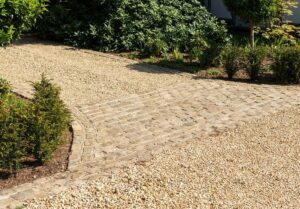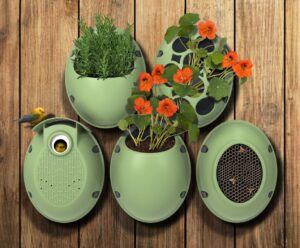The Royal Horticultural Society (RHS) has seen a threefold increase in drought-related enquiries from its members this year, with many reporting damage to evergreens.
With Yorkshire preparing for a hosepipe ban to come into effect tomorrow (Friday 11th) and forecasters predicting the warm, dry weather will persist throughout summer across the country, the charity is sharing its water management advice with gardeners.
Evergreens have been a common concern among the RHS’ more than 600,000 members this year, having endured almost no rain in spring followed by successive heatwaves. Caroline Mazzey, RHS horticultural advisor, said: “Evergreens need water all year. This year’s dry conditions have delayed new growth whilst loss of the older leaves has gone ahead as usual, resulting in sparse foliage. Evergreens in pots are seeing this exaggerated with doorstep favourites such as olive and bay trees among those feeling the effects most.”
While gardeners can help struggling evergreen shrubs and perennials to survive, they are encouraged to let the most common evergreen – the UK’s lawns – go brown, as is the case at some of the RHS’s own gardens. While drought can cause the top growth to turn brown, in a well-established lawn the underlying roots should still be alive, ready to send up fresh leaves once rain returns. Avoiding heavy usage of a yellowed lawn will help prevent it wearing away and needing to be re-seeded later in the year.
RHS watering advice for drought:
- Use trays under pots to avoid water simply running out of the bottom – instead it will be re-absorbed into the compost. Likewise, group pots in shaded spots to reduce water loss. Colour and material of pots can make a difference to temperature and drying out of a plant’s roots; so lighter colour non-porous containers are best. RHS research has shown that a teacup of water each day is enough for to grow a petunia, so there’s no need to apply excess water – just enough to moisten the compost.
- Let your lawn go brown. When rain returns so, too, will its green colour. Avoid cutting, leaving the lawn longer, to help the grass stay greener for longer.
- Water early in the morning to reduce evaporation in hot weather. Late evening is the next best option.
- Prioritise newly planted plants and those showing signs of wilt. Water with a watering can directly to the rootzone, ideally with saved grey water
- Apply a layer of compost or mulch to help cool plant roots and trap moisture. If the rain does come, it will drain through to the root zone.
- Install water butts in dry weather and to take advantage of downpours when they arrive and consider using greywater from showers, baths, kitchens and washing machine rinse cycles. The latter should be used on the garden within 24 hours to minimise bacterial growth; and avoid using grey water on edibles that aren’t cooked (such as salads.)
While these are some of the immediate steps gardeners can take to help plants through a dry spell, gardeners should also consider design and planting to help ensure gardens thrive.
In its own gardens, the RHS is trialling plants that can navigate cold and wet winters and measuring the water uptake of 20 popular plants in all conditions to understand the amount of water needed for them to survive and thrive. This growing season’s low rainfall, sunny days and high temperatures have led to an increased water demand of 25% on average. At the same time, soil moisture is down from an average range of 15-20% to just 5%. Those plants found to require moderate to high water uptake include Dahlia, while others such as Bistorta officinalis ‘Superba’ performed well with less water.
Janet Manning, RHS Water Reduction Officer, said: “At the RHS we’re looking to ‘spongify’ our gardens, holding onto more rain when it arrives so that the plants and soil release it more slowly, helping both flood and drought situations. This needs planning and can’t be done in the few short weeks during a drought, but we can make sure we are using what we have as carefully as possible, not watering lawns where damage would not be irreparable, grouping pots and utilising shade.”


















